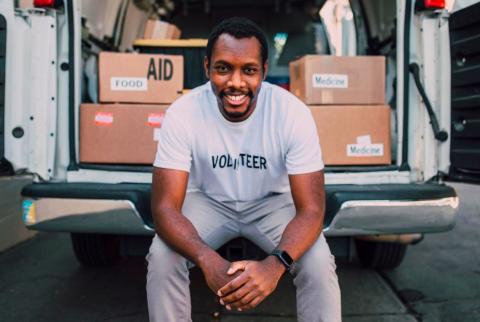Get Funding.
Create Change.
You are here
Budgeting for Something Priceless

A hypothetical: you want a grant to support volunteer transportation for elderly, infirm or visually impaired people in your community. Or maybe a grant to match mentors with high school students who need extra help. You’ve made the case, defined the objectives and profiled your organization’s credentials. Now for the budget. You list personnel, some costs for space and administrative functions, Internet support, a bit of staff training.
Don’t forget to calculate the value of volunteers who make the program work—drivers to take people to and from their destinations, corporate employees who show up to work with students. It’s important to present a budget that accurately demonstrates what a program actually costs, even if some of those costs are covered by volunteer work or in-kind contributions.
There are national metrics to point the way. In one year, American volunteers gave 6.9 billion hours at an estimated total value of $167 billion. That’s about $25 as an average “cost” for an hour of someone’s volunteer time. But it’s probably a bit high for some volunteer work and too low for other kinds of donated assistance.
A useful way to come up with the true value of volunteers in your program is to ask “what would we have to pay in the local labor market for such work?” If people didn’t volunteer to drive isolated seniors to medical appointments, you might have to pay $18-21 per hour for Uber drivers. If you needed to recruit, train and deploy professional mentors, you might spend $30 an hour or more.
A red flag: if the volunteer driver happens to be a $400-an-hour attorney, you can’t put that “value” in your budget. She’s not providing legal counsel; she’s driving someone to the doctor.
It’s a good idea to log volunteer hours (you can use your existing time sheets or other system for tracking paid work). This helps in two ways: it allows you to show the true cost of labor for your program; and it gives evidence of community support, something that stands out on a website or in the local media.
If nonprofits had to pay for those 6.9 billion hours of work that was volunteered, they would have needed to raise almost 40 percent more in charitable giving to cover the costs. Proposals need to reflect true costs and when they do, foundations can see how their money leverages a lot more work—thanks to volunteers who step up.
Thomas Boyd is Chief Editorial Consultant for The Grantsmanship Center
and an independent consultant to nonprofit organizations.
_______________________________________
We welcome you to link to these pages and to direct people to this information on our site.
If you'd like to use this copyrighted material in some other way, please contact us for permission: info@tgci.com.
We love to hear from you!
© Copyright 2021, The Grantsmanship Center
You're welcome to link to these pages and to direct people to our website.
If you'd like to use this copyrighted material in some other way,
please contact us for permission: info@tgci.com. We love to hear from you!
A follow-up study of 385 of our graduates found documented that they won grants totaling over $21 million within just six months of completing the 5-day Grantsmanship Training Program®. Our training produces results!

